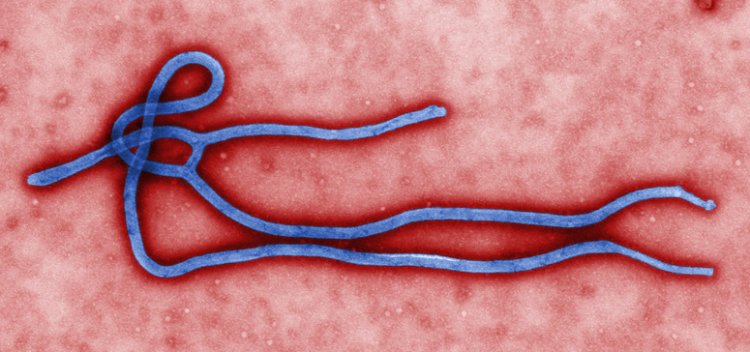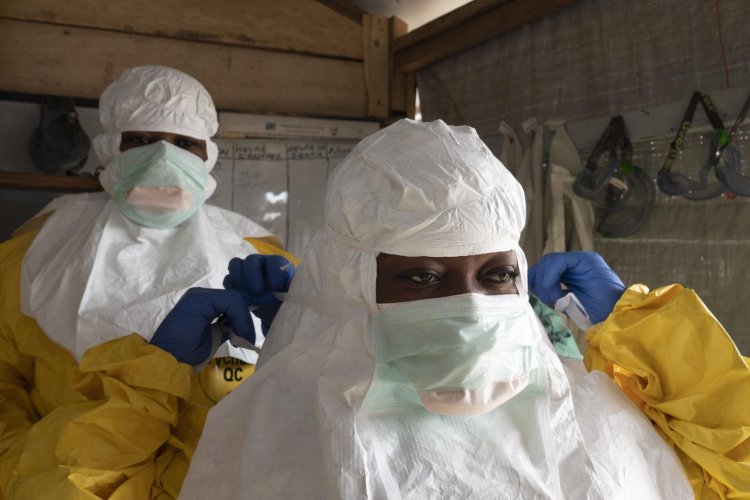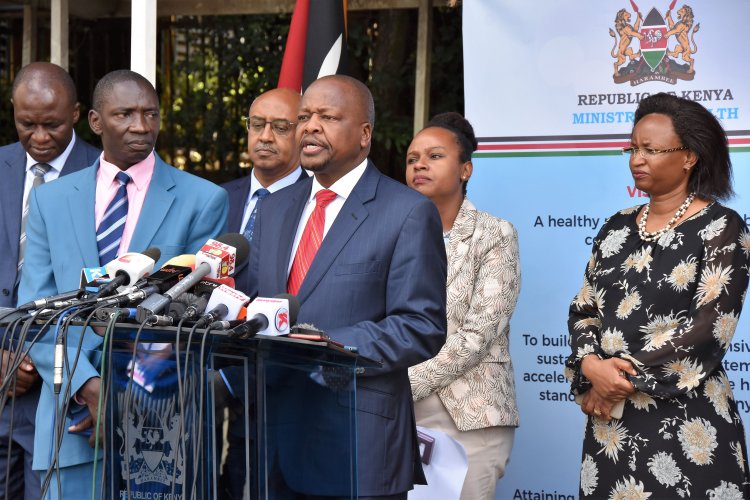Details Of Ebola Virus Reported In Kenya's Neighbouring Country
However, the announcement of the outbreak was considered a sensitive issue due to its likely negative impact on tourism and coming just a weekend after the country staged the three-day Nyege Nyege Festival.

Kenya's neighbour to the West, Uganda, on Tuesday, September 20 confirmed one Ebola case in Mubende District.
This is after a 24-year-old man, who presented the symptoms, died in the morning, according to high-level government officials who were briefed on the matter the previous night.
However, the announcement of the outbreak was considered a sensitive issue due to its likely negative impact on tourism and coming just a weekend after the country staged the three-day Nyege Nyege Festival.
"Uganda confirms an outbreak of Ebola Virus Disease (EVD) in Mubende District, Uganda. The confirmed case is a 24-year-old male a resident of Ngabano village of Madudu Sub County in Mubende District presented with EVD symptoms and later succumbed," the health ministry said.

Health officials wearing Ebola protective gears. /AL JAZEERA
Health Minister Jane Ruth Aceng was reported to be in New York, and sources said officials first briefed President Yoweri Museveni. Senior Ministry of Health staff rushed to Mubende after an unknown number of residents succumbed to what was initially reported as a “strange illness” until the confirmation.
The Democratic Republic of Congo (DRC), which neighbours Uganda to the west, is currently battling an outbreak of Ebola Virus Disease, previously categorised as a hemorrhagic fever.
Uganda has had at least three previous episodes of Ebola Virus Disease, the most deadly being in 2000 that killed hundreds, including its lead treatment specialist, Dr Matthew Lukwiya.
What Is Ebola?
According to the World Health Organisation (WHO), the disease is transmitted to people from animals and spreads through human-to-human infection. It got its name from a river in the DRC, where it was first recognised.
It comprises four distinct subtypes: Zaire, Sudan, Côte d'Ivoire and Reston.
Ebola virus disease (EVD) was formerly known as Ebola hemorrhagic fever and often affects humans but non-human primates (monkeys, gorillas, and chimpanzees) can also contract the disease. According to WHO, the average EVD case fatality rate is around 50 per cent with case fatality rates varying from 25 per cent to 90 per cent in past outbreaks.
The largest Ebola outbreak in history ravaged the West African nations of Guinea, Liberia, and Sierra Leone from 2014 to 2016, killing more than 11,300 people.
Symptoms
Ebola is often characterised by the sudden onset of fever, intense weakness, muscle pain, headache and sore throat.
The victims are then hit with vomiting, diarrhoea, rash, impaired kidney and liver functions, and internal and external bleeding. Laboratory findings include low white blood cell and platelet counts and elevated liver enzymes.
The fever has an incubation period of two to 21 days, meaning that someone can catch the virus and not yet know that he or she is sick for up to 21 days when the symptoms begin to appear. According to The Centers for Disease Control and Prevention (CDC), a blood test can only be positive for Ebola once symptoms appear.
However, it takes 42 days for a country to be declared free of Ebola transmission. WHO doubles the 21-day incubation period of the virus to ensure no new infections are happening.
How It Is Transmitted
It is thought that fruit bats of the Pteropodidae family are natural Ebola virus hosts. Humans get the virus when they get into close contact with the blood, secretions, organs or other bodily fluids of infected animals.
You can also get the virus when you touch objects that have been contaminated with body fluids (like blood, faeces, vomit) from an infected person.
Health care workers have frequently been infected while treating Ebola patients. Burial ceremonies where mourners have direct contact with the body of the deceased person have also led to the spread.
WHO notes that people remain infectious as long as their blood contains the virus.
Cure
There is no known cure for the disease just yet, but scientists are working hard to find one. Patients are, however, put on supportive care (rehydration with oral or intravenous fluids) while doctors treat specific symptoms to improve survival.
Vaccine
An experimental Ebola vaccine, rVSV-ZEBOV, was tried out in Guinea in 2015. Among the 5,837 people who received the vaccine, no Ebola cases were recorded 10 days or more after vaccination.
The vaccine is currently in use in DRC.
Prevention and Control of Ebola
- Reduce the risk of wildlife-to-human transmission with no contact with infected fruit bats, monkeys, apes, forest antelope or porcupines, and or eating of their raw meat.
- Thoroughly cook animal products before consuming them.
- Always ensure a safe and dignified burial of the dead, identifying people who may have been in contact with someone infected with Ebola and monitoring their health for 21 days.
- WHO also recommends that male survivors of EVD practice safer sex and hygiene for 12 months from onset of symptoms or until their semen tests negative twice for the Ebola virus.
Kenya's Ministry of Health is yet to comment on the outbreak and the measures taken to prevent the entry of the virus into the country.

Health CS Mutahi Kagwe during a past COVID-19 briefing. /MINISTRY OF HEALTH






